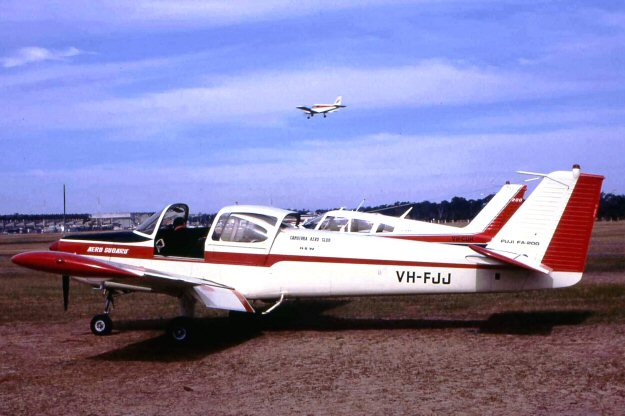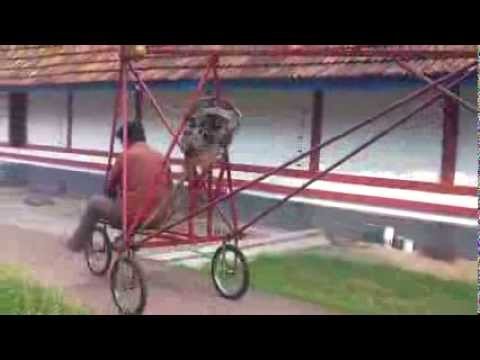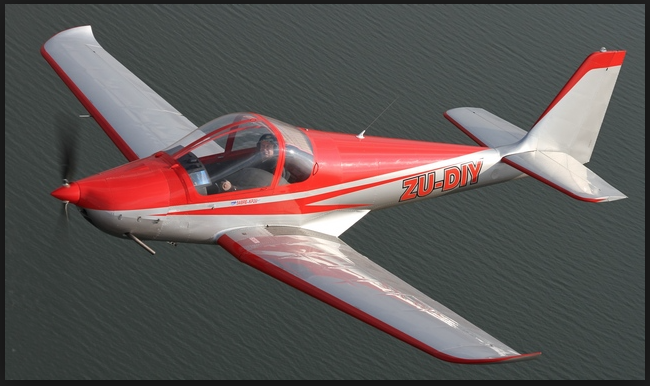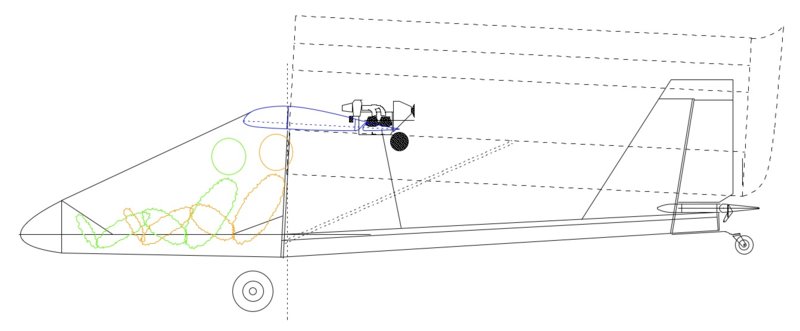-
Posts
1,412 -
Joined
-
Last visited
-
Days Won
9
Content Type
Profiles
Forums
Gallery
Downloads
Blogs
Events
Store
Aircraft
Resources
Tutorials
Articles
Classifieds
Movies
Books
Community Map
Quizzes
Videos Directory
Posts posted by pylon500
-
-
If you think it is an odd design, it's conception is even crazier.
The whole thing was a design exercise to see if they could replicate, and make fly, an imaginary flying machine from a Japanese animated movie!
The movie is 'Nausicaä of the Valley of the Wind'.
Flown around the place by a young princess, with some cat like creature standing on her shoulder.
Actually a good little movie.
-
 1
1
-
-
-
I can agree with experienced pilots getting annoyed with what happens around the circuit, and my observations are that some pilots partially miss the point of circuit area calls.It annoy's the heck out of me when pilots call "joining cross-wind" when they are actually joining "midfield crosswind"Many pilots think that the call is to state intent, and that the other words thrown in are just part of the 'jargon', not realising that part of the call is also to state location.
There are then parts of the 'jargon' that tend to be defined by accepted norms rather than hard definition on paper.
Trying to fix that situation runs into a double edge sword which has us adding more words to the call, which at a busy airfield (or in my situation of two airfields in reasonable proximity, on the same frequency), can quickly fill up the airwaves with constant chatter.
Case in point, the word 'downwind' can be used on it's own, or prefixed by a choice of four other words; Joining, turning, mid or late.
The 'unwritten' rule has the singular word on it's own, is used in between turning and mid.
All four variants state the same intent, but individually, they all propose a fairly specific location except 'joining', which can be a red herring.
So, if you say;
Turning down wind, you're at that point (already in a circuit) going from crosswind to downwind, supposedly out roughly at a forty five degree angle from the end of the strip you took off from (angles may vary...)
Downwind, on it's own, suggests (colloquially) that you are between turning and mid downwind, which leads to;
Mid downwind, which has you halfway along the strip.
Late downwind, means you either forgot to call downwind or couldn't get a call in due to radio traffic, but you're about to turn Base anyway.
The tricky one is;
Joining downwind, with no other locative word, implies you are new to the circuit at roughly the 'turning downwind' point.
If you want to 'join' the circuit at any other point, that position needs to be stated, to give a position to your intention.
So, 'joining mid downwind' and 'joining late downwind' define an intent and a location.
Some slightly confusing prefixes are 'long' and 'early' downwind.
Joining long downwind implies you are actually further upwind in the circuit than the crosswind position, and intending to fly into the circuit for the first time.
If for some reason you had to extend your upwind after takeoff, and want to let others in the circuit know that you're still technically in circuit (but breaking out the VTC), then you can call;
Turning wide crosswind when you change from runway heading, or just;
Turning long downwind as you pick up the downwind leg direction.
Saying Early downwind is just confusing, but is really the word to use between 'turning' and 'mid' if you don't want to use the statement 'downwind' on it's own.
See, clear as mud!
I blame all errors on it being late, and that I should be in bed![/i]
-
 1
1
-
 1
1
-
-
I guess we'll see in our membership fees next year?I wonder who will pick up the bill for any loss?-
 1
1
-
-
-
As long ashe has something that goes beep-beep-beep, I can't see a problem

-
Knew one of the previous owners, and flew it testing a prop.
Sweetest drifter I've ever flown.
Said owner would almost be tempted to buy it back, he had the Fisher and an RV4 and had to sell one of them.
I think he was hoping the Rv would go first.
-
 1
1
-
-
You're forgetting a very important point;
The other 99.8% of the common population think we're rich, and deserve to be screwed for all we're worth
-
 4
4
-
-
On the youtube thread, so many people were saying he should put on a tailwheel, but he was sticking to a skid for weight(?), I think he needs a longer skid as sitting on the ground, it is well above stalling angle and affecting his acceleration.
To say nothing of being tail heavy (he admits he left the seat too far back) and the possibility of the tail/elevator remaining stalled for a lot of the ground roll.
Without a prop on the front, there is no real reason to have a long U/C set-up.
Most modellers will see that the thing barely flying, and just at the edge of stall.
-
Must admit, I only watched the first video, and even then I suspected it was going to be slightly on the heavy.
Now watching this video, and seeing some of the materials used, I'm only slightly surprised it could barely get off the ground.
At least he's starting to come to grips with some of the stuff he's been overlooking.
-
No, the drive has actually seized.
It needs a platter transplant, maybe...
What's really annoying was the little Toshiba 1TB pocket drive that I managed to salvage some info with, died a week later.
I think I can save that one, although it's mainly movies and photos.

-
rotax618 re;
During the initial design stage, the plan was to add a 4" extension on a 912, and possibly toy with a bit of sweep.
As it was, an EA81 with an NSI gearbox was bought, so I'm currently trying to extract the spanner from the werks, and various changes are likely to be made.
Current thinking is to do away with the NSI box, create an extension housing from the bell housing to carry an overhead shaft to extend probably around 12" aft, with a HTD belt reduction.
And probably still some sweep back...
Having a minor problem at the moment with having lost some of the drawings and the CAD program I was using when my hard drive died, you guessed it, hadn't backed up for a while

-
While all these ancient things are being maintained under CASA rule and in GA facilities (what do your 100 hourly/annuals cost?) you wont find much statistical evidence of age related incidents.Can anyone who thinks this way point me to an accident from the ATSB data base to support your view ?And to make sure this status quo remains, the latest proposal is that to maintain hire and reward ultralights aircraft, you will have to be a full LAME, and/or upgrade from level 2 to level 4.
The cost of obtaining these tickets will then reflect in the cost of maintenance, you know, the thing that is killing GA and driving everyone to (supposedly) cheaper ultralight recreational aircraft.
And when we get 760kg, they're looking at 1500kg!?
I give it four years before someone puts up their hand and says;
"Hey, lets invent the ULTRALIGHT."
-
-
To a degree.IMO, for a low and slow design like he's making, even Bunnings materials are OK PROVIDED the engineering is right.I was looking at various parts of his concept like, light alloy angle around the perimeter of his foam tail surfaces, which would be heavier than the ply he used on his biplane.
I mean the whole tail concept is pretty agricultural from a weight aspect, to say nothing of the heavy control surface balance and possibility of low frequency flutter (I've had it, I know it can happen).
Then there's the square tubing he decided to use for the fuse frame, can't tell if it's inch and a half or two inch square, but very obviously one eighth wall thickness.
Much better tubing is commonly available, like a two inch square with rounded corners and only one sixteenth wall which I have used a lot in my designs, or even better in his situation would have been typical hang glider leading edge tube, two and a half inch round with also one sixteenth wall, lighter ind stiffer than the thin square I use and better in the twisting situation.
All his machined brackets are from more of the heavy walled, square cornered tube, when there is square tube with filleted corners is available.
True enough, he probably hasn't put any thought into how long this structure is to last, and I'm coming from working on forty plus year old Cessnas and the like.
Should be interesting to see what material he has planned to cover the wings with...
As a modeller 'in the business', I would think he has the ability to bargain with some of the model film suppliers to get large rolls of 'name your iron on film here' at a good price.
Guess we'll just have to watch and see...
-
Didn't look or sound like a good day for a test flight, but it definitely leapt off the ground!
-
OK, my inbox is probably going to get spammed into meltdown but...
Saw the heading picture and thought, 'that looks like an interesting take on the Legal Eagle layout, so I watched the video.
Then I saw how he was making it, and the Bunnings quality materials he was using and couldn't help myself, I had to take him aside and point out a few things.
I know the armchair experts at youtube are going to explode on me, but the kid shows real promise and tenacity, it would just be better to funnel that enthusiasm into better knowledge of what he's trying to do.
Guess I'm just losing some of my tact in my old age?
-
 1
1
-
-
Looks like the Russian gyro guys have already had a go...HA! Very interesting! Just wait till the gyrocopter guys get a hold of this... -
A22 and slippery in the same sentence?
Must have had a snake in the cockpit.

-
-
So he is expected to pay $550 to get approval to fit a $700 prop, that has an already known history, made by a prop manufacturer (not made as an afterthought by the aircraft manufacturer to keep cost down), and do this to an aircraft that similar ones have been operating in this configuration for many years?Looks like MARAP is going to be a real money spinner for the RAAus!Just jump through the hoops, pay the money, get the approval, and go flying.I mean, look at this;
A weight increase, AS SUPPLIED BY THE MANUFACTURER, and RAAus still wants $550 to rubber stamp and already existing and researched document.
As I've said before, we have become GA again.
-
That's pretty cool.
-
At the moment he is very busy with his primary business, and is doing another conversion (Limbach to 912) which, despite the cost to the owners, don't make him much (if any) money.When he thinks he can get to do it practically, he will no doubt advertise.Care to mention who the rotax service agent is? -
Finally back from holidays...
OK, the wingfold is the same concept, but done a bit different.
It's an all metal wing with one strut.
The wing has a single spar, and is attached to the fuselage by what is basically a universal joint.
The strut is attached at to the wing via a rotating pin (a lot heavier than the Groppo Trail).
The rear spar is attached via a remotely pulled pin which, after 'unsafetied', is operated from the wingtip allowing the wing to roll forward to vertical while still being supported by the strut.
Then just swung back alongside the fuselage (will have some form of brace to hold it back).
Nothing is disconnected, fuel tubes just flex with the wing and the flaperon rods go up with the wing, pushing the flaperons to the full 'up' position to give clearance for the prop.








Tigermoth has engine failure and lands on roadworks successfully, no injuries or damage.
in Aircraft Incidents and Accidents
Posted
Engine issues?
Looks like the engine almost fell out